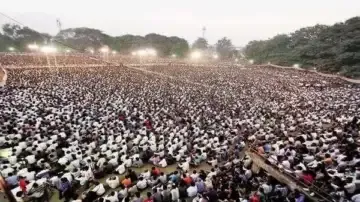
In a landmark ruling that will have far-reaching implications, the country's top court has asserted that maternity leave is a constitutional right, regardless of the number of a children a woman might have.
Under the law, which was last amended in 2017, women are entitled to 26 weeks of paid time off for up to two children.
Now, Supreme Court justices Abhay Oka and Ujjal Bhuyan have ruled, "Right to life also includes the right to health. Right to live with human dignity and the right to privacy are now acknowledged facets of Article 21."
The two-judge bench was hearing a case brought to it by a government school teacher in Tamil Nadu. The teacher had had two children from a previous marriage.
Following a divorce, custody of the children went to her husband. When she remarried and had a third child, her request for maternity leave for denied. A Madras high court division bench noted she already had two surviving children and, so, was entitled to only 12 weeks and not 26 weeks of paid leave.
Even though the woman had not taken maternity leave for her first two kids who were born before she entered government service, the high court ruled that in light of the state's two-child norm, maternity benefits could not be given for a third child.
The Supreme Court ruling overturning that narrow view is a relief not just to her but to mothers throughout the country.
Fertility numbers
In 1961 when India first legally mandated maternity benefits, women were entitled to 12 weeks of paid time off. In 2017, this was increased to 26 weeks. Moreover, offices with more than 10 employees were required to provide for creche facilities.
Some saw these as 'sops' to women. There were dire warnings that the expanded leave would lead to a hiring freeze of women by employers particularly in small and medium-sized companies. Research by TeamLease, a human resource service company, estimated that 2.6% of jobs could potentially be lost across sectors.
These findings were backed by academic research. A paper published by Maitreyi Bordia Das and Ieva Zumbyte for the World Bank in 2017, the year the amended maternity benefits were passed, found that "having a young child in the home depresses mothers' employment".
The big noise around maternity benefits masks the minuscule number of women who are entitled to it. In India, just 6% of women are employed in the formal sector. According to IndiaSpend, 94% work in the informal sector- farming, small scale manufacturing, construction-and are not eligible for paid time off.
Yet, even in the formal sector, most women experience what economists call the "motherhood penalty". Globally, mums with children below the age of five have the lowest employment rate (47.6%) compared to dads with kids of the same age (87.9%) and women with no children at all (54.4%), according to a 2018 study of 90 countries by the International Labour Organisation.
Women, in other words, pay a disproportionate price for having children and it's a realization that is being felt around the world. Earlier this week, the United Nations Population Fund said the world was witnessing an "unprecedented decline in fertility rates". A report that surveyed 14,000 people in 14 countries found that while most want two or more children, fertility rates are falling because many felt unable to create the families they want.
In India, now the world's most populous nation with 1.46 billion people, fertility rates are also coming down, even though total numbers will hit 1.7 billion in about 40 years before they fall.
In 17 states, fertility rates are already below replacement level of two births per woman with the five southern states leading the charge. In anticipation of the delimitation exercise that will redraw electoral boundaries to reflect the population, the chief ministers of both Tamil Nadu and Andhra Pradesh have publicly appealed to women to produce more babies.
It takes a village
It might not be out of place to begin talking about paternity leave - not the token 10 days or two weeks but at par with maternity leave.
Paternity leave would serve several outcomes. It would mark a significant step towards gender parity. It would make it easier for mothers to remain in the workforce (good for GDP too). And it would help new dads bond better with their babies.
When Dubai-based Junaid Khan had his first daughter he requested his construction firm for time off, even if it was with reduced pay. At the time when his wife got pregnant he was working on a project in Sikkim and figured he would rather be home with her once the baby arrived.
"For every parent, these are moments that will never come back," he explained.
For Bengaluru-based Prasun Bajoria it helped that he ran his own business and, so, could take 75 days off when his wife had their first baby. "It's not easy on the mother," he said. "I wanted to be at home for her."
While Prasun said he became adept at a host of skills from bath-time to changing diapers, Khan took on the job of making sure the house was well stocked with formula and diapers and anything else his wife might need.
Both men said their wives are pregnant again and both intend to take time off, again.
After all, if it takes a village to raise a child, why is it that only mothers bear the cost?